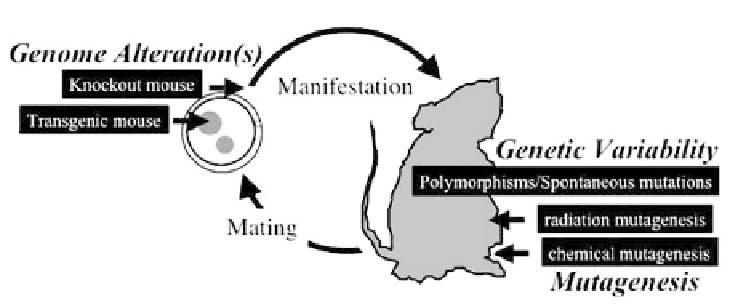Information Technology Reference
In-Depth Information
Since life is a typical complex adaptive system, a major challenge is to depict its
composition and dynamism. Apart from the structural design of whole parts, the
concrete working plans and protocols in time and space for life to emerge, are all
inscribed in the genomic DNA sequences.
10.1.1 Relevancy of Mouse as Simulator
Given that the entire blueprint of life is depicted in the genome, an ideal life simula-
tor must reconstruct all the biology solely from three billion letters of the genomic
DNA sequences. At the time of fertilization, the life of the mouse starts and after
4 months it matures and is able to produce the next generation as shown in Fig. 1.
The 4-month “calculation” period appears to be an acceptable time range be-
cause the reconstructed life is valid to start, with nothing left to be proven or evalu-
ated. Hence, it is obvious that all the life phenomena are reflected in the mouse
model system. The key question, however, is whether the genomic function would
be effectively and appropriately elucidated by using the mouse system as a
bona fide
simulator.
In this chapter we discuss recent developments in using mutant mice to directly
decode the genomic DNA sequence toward its biological outcome in a genome-wide
manner. This approach is particularly effective in deciphering complicated biological
systems like neurological behavior and immunological processes at the organism
level.
Fig. 1.
Life cycle of the mouse with respect to the genomic DNA program and its execution. A
part of genomic DNA sequences may be artificially altered by transgenesis or gene-targeting.
The differences may have been induced by mutagenesis or they already existed as natural
polymorphisms. At the step of mating and fertilization, all the sufficient and necessary infor-
mation is compiled. All the biological traits are autonomously manifested during the
20-day gestation period and the 3-month of maturation cycle.

